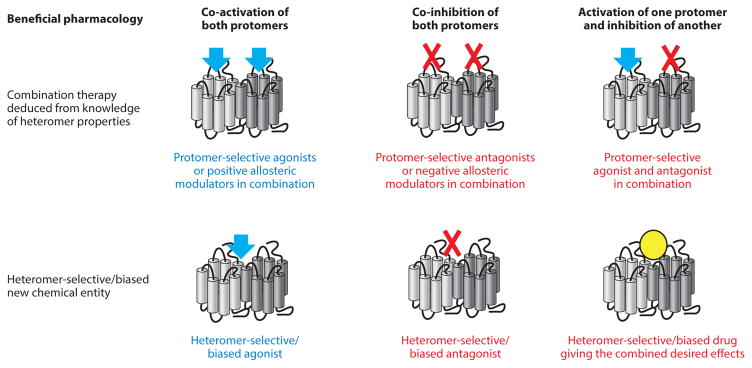Figure 3.
Use of the knowledge of heteromerization to develop novel therapies. Once the physiological and/or pathological function of a heteromer compared with a monomer/homomer is understood, one can elucidate how to modulate that function for therapeutic benefit. There are many options in this regard, examples of which are illustrated. It is important to note, however, that biased signaling may also need to be considered, and the desired pharmacology will potentially require a specific biased signaling profile that may also be cell context–dependent. The desired drug may need to act on monomers/homomers and select against modulating heteromers. Despite this knowledge, finding a suitable drug that fulfills these requirements still requires knowledge and screening of relevant heteromers in parallel with constituent protomers.

